

others
US Manufacturing PMI expected to signal mild contraction in February – Crypto News
- The US ISM Manufacturing PMI is expected to have risen modestly in February.
- Market players will also pay attention to the ISM Prices Paid Index and the Employment Index.
- EUR/USD trapped between Fibonacci levels, as PCE inflation did not move the bar.
The Institute for Supply Management(ISM) will publish the February United States (US) Manufacturing Purchasing Managers’ Index (PMI) on Friday, the first business day of March. The report is considered a reliable indicator of the US manufacturing sector’s health, and the direction of the overall economy. The figures are expressed in percentages, with anything above 50.0 indicating expansion and readings below reflecting business contraction.
The US February Manufacturing PMI is foreseen at 49.5, improving from the December reading of 49.1 but still falling short of the desired threshold. According to the official release, “the manufacturing sector contracted in January for the 15th consecutive month following one month of “unchanged” status (a PMI reading of 50) and 28 months of growth prior to that.”
What to expect from the ISM manufacturing PMI report?
Back in January, the ISM Manufacturing PMI was pretty encouraging, as responders to the survey noted an increase in sales and more stable costs. Still, many noted a slowdown in new orders and continuously slow demand.
The ISM Manufacturing PMI is divided into several subcomponents, some of which are closely watched by speculative interest. In January, the New Orders Index moved into expansion territory at 52.5, somehow suggesting an improving demand outlook. At the same time, the Prices Index registered 52.9, up 7.7 percentage points compared to the December reading. The Price Index gauges the price change that US manufacturers pay for their inputs, and such an advance signaled heating price pressures. Finally, the Employment Index registered 47.1, down from December’s figure of 47.5.
Generally speaking, a headline reading above 50.0 should indicate above-expectations expansion and financial markets should welcome the positive news. As a result, high-yielding assets such as stocks may run higher, while the US Dollar may come under selling pressure amid risk appetite. Investors will also welcome signs of further expansion, such as an increase in the New Orders sub-component and easing price pressures.
Regarding inflation, the US released the January Core Personal Consumption Expenditures (PCE) Price Index. The Bureau of Economic Analysis (BEA) reported the Federal Reserve’s (Fed) favorite inflation gauge on Thursday, with the figures meeting market expectations. The Core PCE Price Index increased 0.4% MoM, doubling the previous 0.2% advance, while the annual rate printed at 2.8% easing from 2.9% in December.
In line with expectations data barely moved the bar. Market participants continue to bet on a Fed’s rate cut in June, with the odds for a 25 basis points (bps) cut standing at around 52%, unchanged from pre-release levels.
When will the ISM Manufacturing Purchasing Managers’ Index report be released, and how could it affect EUR/USD?
The ISM Manufacturing PMI report is scheduled for release at 15:00 GMT on Friday. Ahead of the data release, the US Dollar struggles to regain its footing. The EUR/USD pair fell pretty much straight ever since hitting 1.1139 by the end of December, bottoming mid-February at 1.0694.
Valeria Bednarik, FXStreet Chief Analyst, notes: “Measuring the December/February slump, the 38.2% Fibonacci retracement comes at 1.0865, where sellers rejected advances in the last few days. So far, buyers defended the downside at around the 23.6% retracement of the same slide at 1.0799, with EUR/USD trading mid-way between Fibonacci levels. The pair would need to break any of those extremes to become more attractive to speculative interest.”
Bednarik adds, “The ongoing advance seems a mere correction, and even if the pair manages to extend gains beyond the 1.0860 area, EUR/USD would need to break through 1.0970, the 61.8% retracement, to confirm a sustainable recovery. EUR self–weakness, however, plays against the bullish case. To the downside, the 1.0800 area is indeed providing support, with a break below it opening the door to a retest of the monthly low. In the meantime, the pair will likely extend its consolidative phase ahead of a directional catalyst that could affect the market’s perspective about upcoming Fed moves.”
Economic Indicator
United States ISM Manufacturing PMI
The Institute for Supply Management (ISM) Manufacturing Purchasing Managers Index (PMI), released on a monthly basis, is a leading indicator gauging business activity in the US manufacturing sector. The indicator is obtained from a survey of manufacturing supply executives based on information they have collected within their respective organizations. Survey responses reflect the change, if any, in the current month compared to the previous month. A reading above 50 indicates that the manufacturing economy is generally expanding, a bullish sign for the US Dollar (USD). A reading below 50 signals that factory activity is generally declining, which is seen as bearish for USD.
The Institute for Supply Management’s (ISM) Manufacturing Purchasing Managers Index (PMI) provides a reliable outlook on the state of the US manufacturing sector. A reading above 50 suggests that the business activity expanded during the survey period and vice versa. PMIs are considered to be leading indicators and could signal a shift in the economic cycle. Stronger-than-expected prints usually have a positive impact on the USD. In addition to the headline PMI, the Employment Index and the Prices Paid Index numbers are watched closely as they shine a light on the labour market and inflation.
Euro FAQs
The Euro is the currency for the 20 European Union countries that belong to the Eurozone. It is the second most heavily traded currency in the world behind the US Dollar. In 2022, it accounted for 31% of all foreign exchange transactions, with an average daily turnover of over $2.2 trillion a day.
EUR/USD is the most heavily traded currency pair in the world, accounting for an estimated 30% off all transactions, followed by EUR/JPY (4%), EUR/GBP (3%) and EUR/AUD (2%).
The European Central Bank (ECB) in Frankfurt, Germany, is the reserve bank for the Eurozone. The ECB sets interest rates and manages monetary policy.
The ECB’s primary mandate is to maintain price stability, which means either controlling inflation or stimulating growth. Its primary tool is the raising or lowering of interest rates. Relatively high interest rates – or the expectation of higher rates – will usually benefit the Euro and vice versa.
The ECB Governing Council makes monetary policy decisions at meetings held eight times a year. Decisions are made by heads of the Eurozone national banks and six permanent members, including the President of the ECB, Christine Lagarde.
Eurozone inflation data, measured by the Harmonized Index of Consumer Prices (HICP), is an important econometric for the Euro. If inflation rises more than expected, especially if above the ECB’s 2% target, it obliges the ECB to raise interest rates to bring it back under control.
Relatively high interest rates compared to its counterparts will usually benefit the Euro, as it makes the region more attractive as a place for global investors to park their money.
Data releases gauge the health of the economy and can impact on the Euro. Indicators such as GDP, Manufacturing and Services PMIs, employment, and consumer sentiment surveys can all influence the direction of the single currency.
A strong economy is good for the Euro. Not only does it attract more foreign investment but it may encourage the ECB to put up interest rates, which will directly strengthen the Euro. Otherwise, if economic data is weak, the Euro is likely to fall.
Economic data for the four largest economies in the euro area (Germany, France, Italy and Spain) are especially significant, as they account for 75% of the Eurozone’s economy.
Another significant data release for the Euro is the Trade Balance. This indicator measures the difference between what a country earns from its exports and what it spends on imports over a given period.
If a country produces highly sought after exports then its currency will gain in value purely from the extra demand created from foreign buyers seeking to purchase these goods. Therefore, a positive net Trade Balance strengthens a currency and vice versa for a negative balance.
-
others1 week ago
Japan Foreign Investment in Japan Stocks up to ¥528.3B in December 12 from previous ¥96.8B – Crypto News
-

 Technology1 week ago
Technology1 week agoOnePlus 15R vs Pixel 9a: Which phone is the best buy under ₹50,000? Display, camera, processor and more compared – Crypto News
-

 Blockchain6 days ago
Blockchain6 days agoThis Week in Stablecoins: Winning the Back Office – Crypto News
-

 Technology5 days ago
Technology5 days agoApple iPhone 16 price drops to ₹40,990 in Croma’s Cromtastic December Sale: How the deal works – Crypto News
-

 Technology5 days ago
Technology5 days agoApple iPhone 16 price drops to ₹40,990 in Croma’s Cromtastic December Sale: How the deal works – Crypto News
-
Business5 days ago
XRP Holders Eye ‘Institutional Grade Yield’ as Ripple Engineer Details Upcoming XRPL Lending Protocol – Crypto News
-

 Technology5 days ago
Technology5 days agoApple iPhone 16 price drops to ₹40,990 in Croma’s Cromtastic December Sale: How the deal works – Crypto News
-

 others7 days ago
others7 days agoAustralian Dollar loses as US Dollar advances before Michigan Sentiment Index – Crypto News
-
Business6 days ago
DOGEBALL Presale: A Boost to Bring P2E Games Back into the Spotlight – Crypto News
-
others5 days ago
XRP Holders Eye ‘Institutional Grade Yield’ as Ripple Engineer Details Upcoming XRPL Lending Protocol – Crypto News
-

 Blockchain5 days ago
Blockchain5 days agoLitecoin Follows Bitcoin’s Momentum, But Resistance Looms At $79.60 – Crypto News
-

 Technology5 days ago
Technology5 days agoApple iPhone 15 price drops to ₹36,490 in Croma Cromtastic December Sale: How the deal works – Crypto News
-
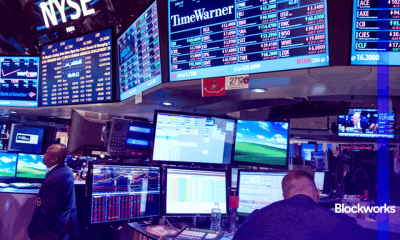
 Cryptocurrency1 week ago
Cryptocurrency1 week agoCapital gets selective – Blockworks – Crypto News
-
others1 week ago
Low-Fee vs. High-Leverage – How to Choose the Optimal Exchange for Your Trading Strategy? – Crypto News
-

 Blockchain1 week ago
Blockchain1 week agoBlockchain’s Institutional Future Is Private and Permissioned – Crypto News
-
Business6 days ago
125 Crypto Firms Mount Unified Defense as Banks Push to Block Stablecoin Rewards – Crypto News
-
Technology5 days ago
Michael Saylor Sparks Debate Over Bitcoin’s Quantum Risk as Bitcoiners Dismiss It as ‘FUD’ – Crypto News
-

 Technology1 week ago
Technology1 week agoUS Puts Tech Deal With UK on Hold – Crypto News
-

 Blockchain1 week ago
Blockchain1 week agoCiti Says Identity Is the New Gatekeeper for Financial Blockchains – Crypto News
-

 others1 week ago
others1 week agoJapanese Yen strengthens as BoJ rate hike speculation grows – Crypto News
-
Metaverse1 week ago
How companies are using AI to squeeze more from your wallet – Crypto News
-
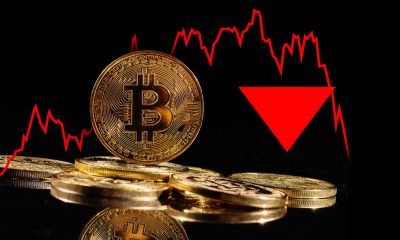
 Blockchain1 week ago
Blockchain1 week agoBitcoin on Track For 4th Annual Decline Despite Crypto Adoption – Crypto News
-

 Cryptocurrency1 week ago
Cryptocurrency1 week agoWhy quantum computing is becoming a real concern for Bitcoin – Crypto News
-

 Blockchain6 days ago
Blockchain6 days agoCoinbase Launches Service to Help Businesses Create Tokens – Crypto News
-

 Cryptocurrency6 days ago
Cryptocurrency6 days agoBTC at $143K, ETH above $4000: Citi issues bullish price forecasts as crypto market continues to struggle – Crypto News
-
Business6 days ago
Ethereum Faces Selling Pressure as BitMEX Co-Founder Rotates $2M Into DeFi Tokens – Crypto News
-
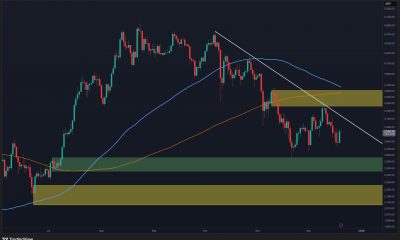
 Cryptocurrency5 days ago
Cryptocurrency5 days agoIs ETH Ready for Sustained Recovery or Another Rejection Looms? – Crypto News
-
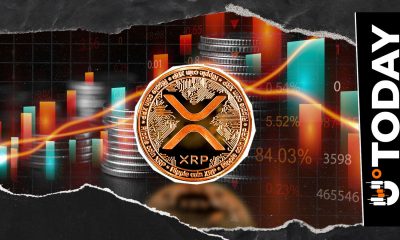
 Cryptocurrency5 days ago
Cryptocurrency5 days agoXRP Could Add Zero If Rally Is Short-Lived – Crypto News
-

 Blockchain5 days ago
Blockchain5 days agoCrypto Market Sentiment Not Fearful Enough For Bottom: Santiment – Crypto News
-

 Blockchain5 days ago
Blockchain5 days agoCrypto Market Sentiment Not Fearful Enough For Bottom: Santiment – Crypto News
-

 Blockchain5 days ago
Blockchain5 days agoLitecoin Follows Bitcoin’s Momentum, But Resistance Looms At $79.60 – Crypto News
-

 Technology4 days ago
Technology4 days agoSamsung Galaxy S25 Ultra price drops to ₹69,999 at Croma Cromtastic December Sale? Here’s how the deal works – Crypto News
-

 Metaverse1 week ago
Metaverse1 week agoSpaceX has two aces up its sleeve in the battle to put AI data centers in space – Crypto News
-

 Cryptocurrency1 week ago
Cryptocurrency1 week agoBitcoin and Ethereum Wobble as US Reports Highest Unemployment Rate Since 2021 – Crypto News
-

 others1 week ago
others1 week agoSEC Crypto Roundtable Questions Whether Americans Can Transact Without Surrendering Privacy – Crypto News
-

 Blockchain7 days ago
Blockchain7 days agoMastercard, BlackRock Join Middle East-Focused Blockchain Effort – Crypto News
-

 Technology7 days ago
Technology7 days agoFrom chibi to plushie: 7 Must-try AI portraits you can create with GPT Image 1.5 – Crypto News
-

 Technology7 days ago
Technology7 days agoFrom chibi to plushie: 7 Must-try AI portraits you can create with GPT Image 1.5 – Crypto News
-
Business7 days ago
Breaking: VanEck Discloses Fees and Staking Details for its Avalanche ETF – Crypto News
-
Business6 days ago
Bitcoin Price Alarming Pattern Points to a Dip to $80k as $2.7b Options Expires Today – Crypto News
-

 Metaverse6 days ago
Metaverse6 days agoAI Tool of the Week: Transform marketing concepts instantly. – Crypto News
-
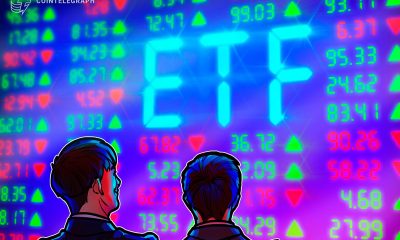
 Blockchain6 days ago
Blockchain6 days agoBlackRock’s IBIT Ranks 6th in ETF Flows Despite Negative Returns – Crypto News
-

 others5 days ago
others5 days agoElliott Wave, seasonality, and cycles indicate more upside – Crypto News
-

 others5 days ago
others5 days agoElliott Wave, seasonality, and cycles indicate more upside – Crypto News
-

 Cryptocurrency5 days ago
Cryptocurrency5 days agoCrypto Industry Must Make Progress Before Trump Leaves Office: Etherealize Co-Founder – Crypto News
-

 Cryptocurrency5 days ago
Cryptocurrency5 days agoCrypto Industry Must Make Progress Before Trump Leaves Office: Etherealize Co-Founder – Crypto News
-

 Blockchain5 days ago
Blockchain5 days agoBlockchain and AI Vibe-Coding To Dethrone Amazon Web Servies: Crypto exec – Crypto News
-

 Blockchain5 days ago
Blockchain5 days agoBanks Need XRP To Be Pricier—Here’s Why A Finance Expert Says So – Crypto News
-

 Technology1 week ago
Technology1 week agoOnePlus 15R and OnePlus Pad Go 2 launching in India tomorrow: How to watch live-stream, expected price, specs and more – Crypto News
-

 Blockchain1 week ago
Blockchain1 week agoCan Bitcoin Bulls Spark a $95,000 BTC Price Rebound? – Crypto News








